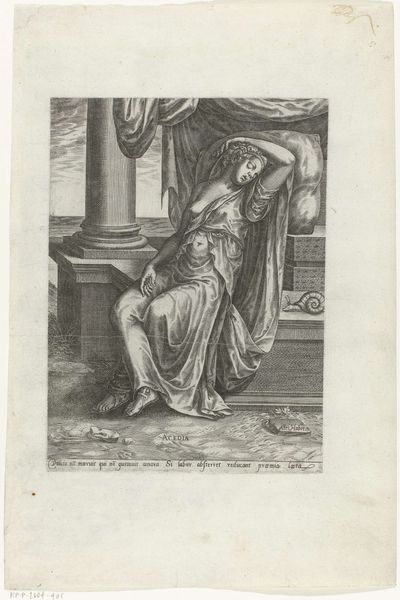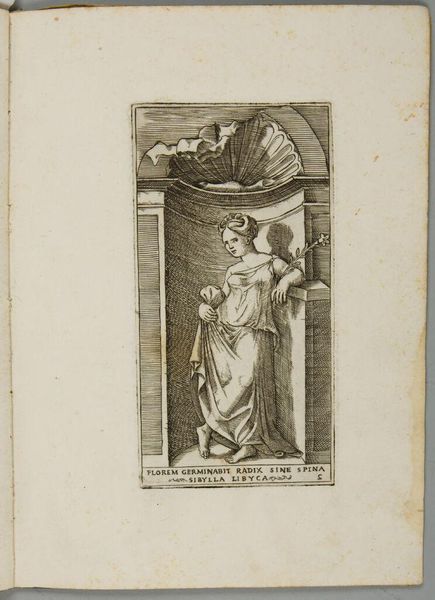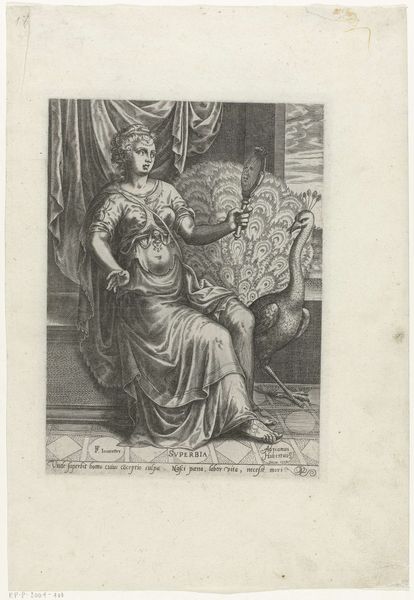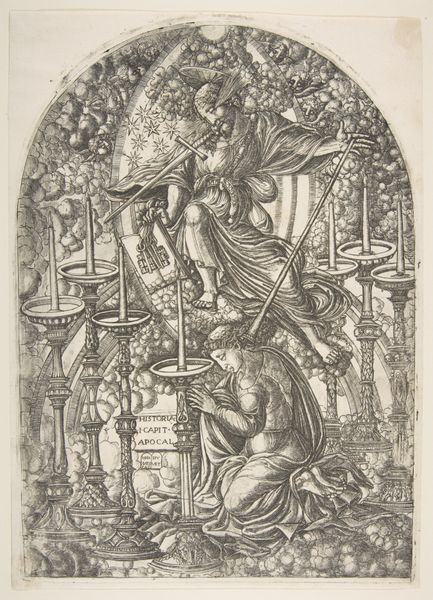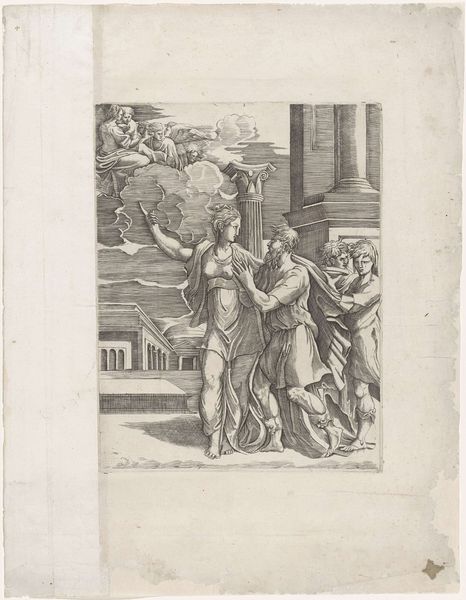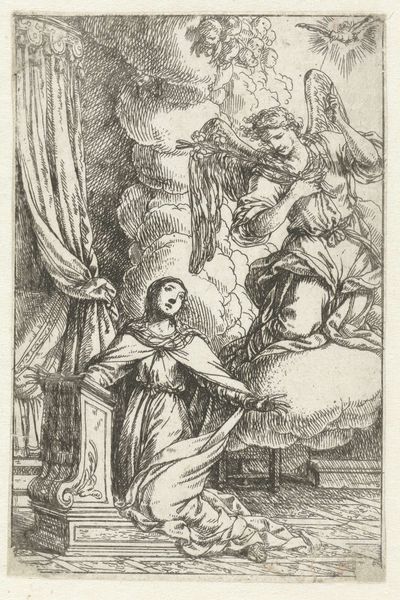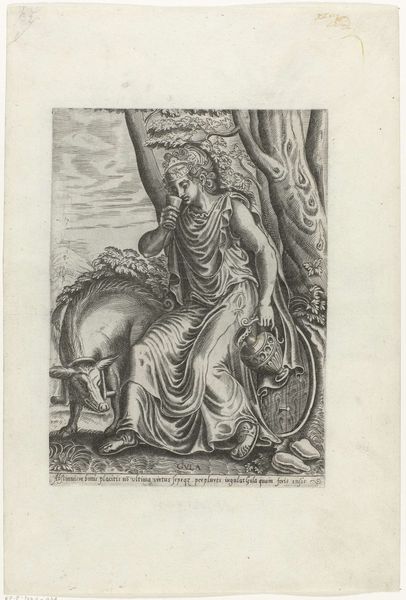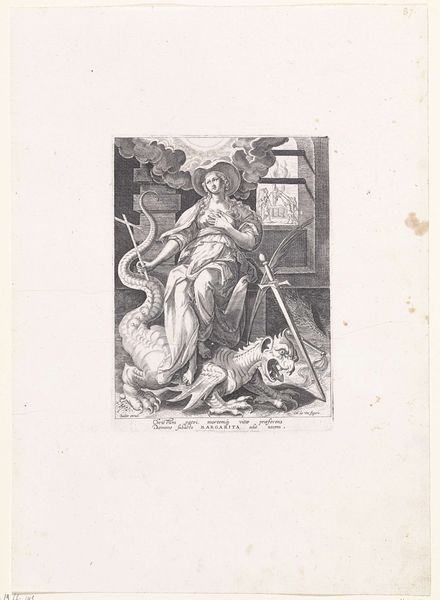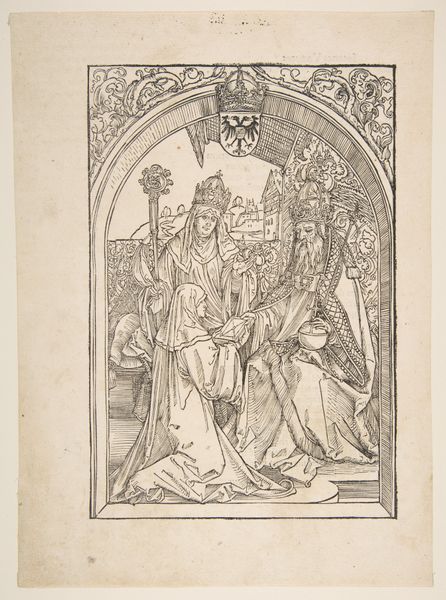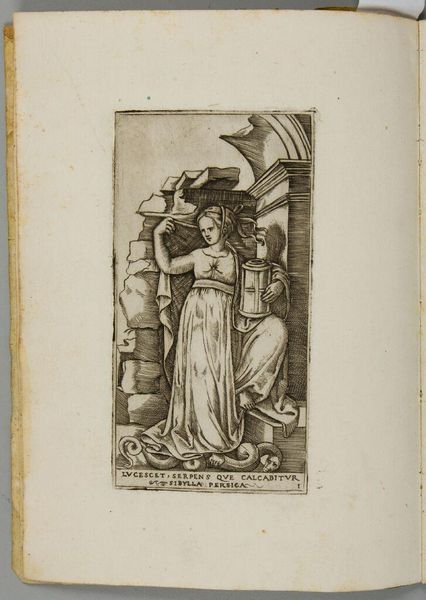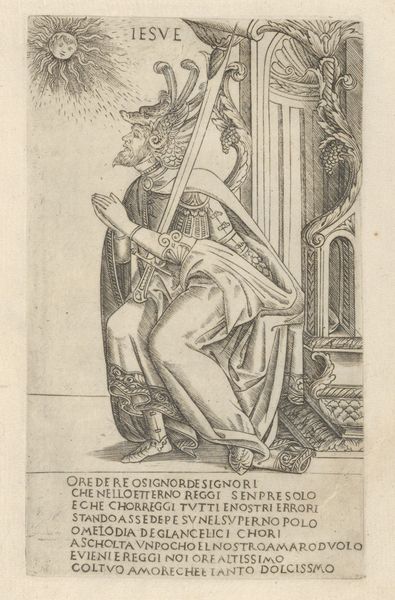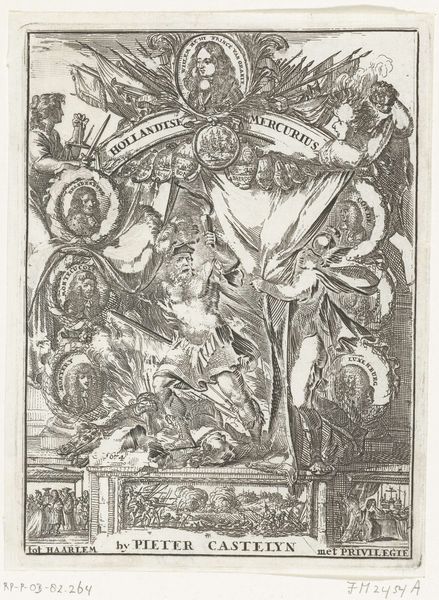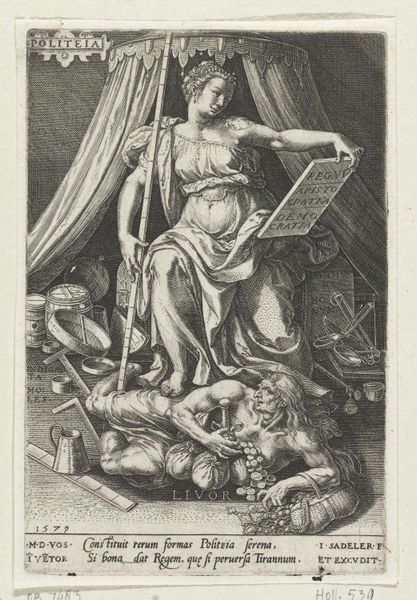
engraving
#
allegory
#
mannerism
#
figuration
#
engraving
Dimensions: height 219 mm, width 161 mm
Copyright: Rijks Museum: Open Domain
Curator: Good morning. We are standing before "Boosheid," an engraving made around 1575 by an anonymous artist and held in the Rijksmuseum collection. The work, rendered in the Mannerist style, allegorically depicts wrath. What's your immediate reaction? Editor: Well, immediately, there's a disturbing theatricality. The central figure is armoured but half-undressed, with what looks like a hellhound straining at the leash behind her, a very strange, disconcerting contrast. The architecture behind the main figure crumbles. Curator: It is an interesting portrayal. It reflects the era's use of allegory to convey moral messages, typical of the Mannerist movement. Consider how the engraving’s distribution as prints contributed to shaping socio-political values of the time by demonising anger and endorsing control. Editor: That control seems tenuous at best, given the backdrop of chaos. What strikes me is how "Boosheid" could be interpreted as an early commentary on gendered expectations surrounding anger, or the performance of gender altogether. A warrioress barely cloaked who has unleashed hell, yet at the same time restrained? Who is being controlled? And by what system? Curator: Such dualities were consciously embedded to emphasize that wrath unchecked leads to ruin. The setting does resemble classical ruins, alluding perhaps to political and societal collapses resulting from anger and irrationality. The print might serve to police behaviors amongst certain demographics. Editor: Or, subversive potential. Isn't there power in uncontrolled fury, especially for those marginalized by societal structures? I see it in a very contemporary context – a release against oppression. This isn't just an allegory about the perils of anger; it's about how suppressed rage finds expression. Curator: An interesting position. Yet, the detailed armor, the symbols...all were quite deliberately constructed to convey particular meanings understood by the viewers of the time, even if we can look at those symbols anew. Perhaps art can be seen as reflecting or creating these frameworks within the socio-political systems, where values and beliefs could be performed, interpreted, and renegotiated. Editor: Absolutely, I appreciate your emphasis on the agency of audiences, though I'm still fixated on that dog, who is both captive and feral. Food for thought, for both of us! Curator: Indeed. A print to reflect upon, for many reasons, now as well as then.
Comments
No comments
Be the first to comment and join the conversation on the ultimate creative platform.
